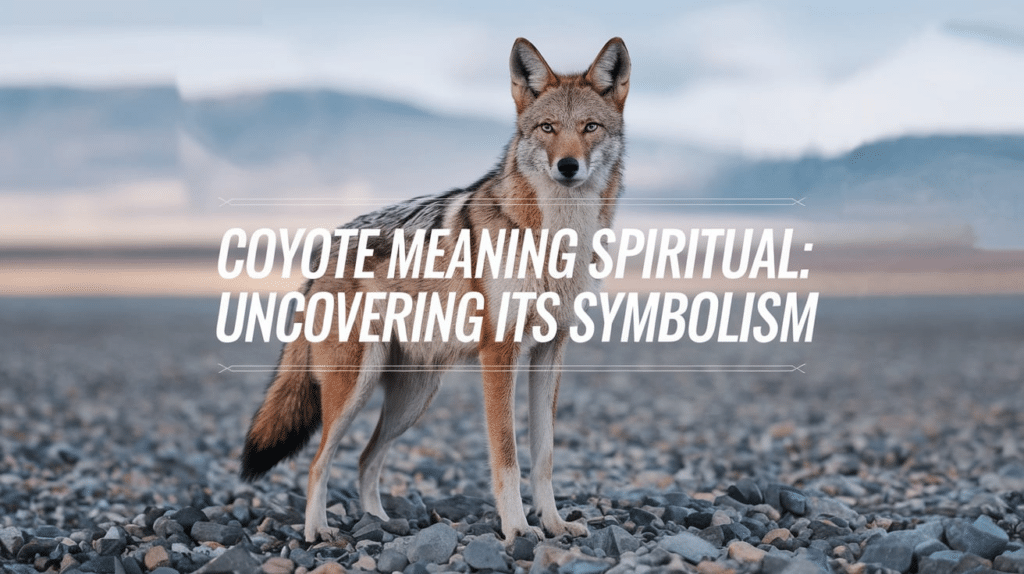The coyote sits at the edge of human stories for thousands of years.
This small but tough animal shows up in tales from many lands, but folks often wonder about coyote meaning spiritual lessons.
The coyote walks through life with a mix of smarts and fun that catches the eye.
It hunts alone sometimes and runs with friends other times.
People watch how it finds food in both deserts and cities, and they see a teacher of sorts.
The coyote makes do with what it has. It shifts plans when needed. It plays even when times get tough.
These traits make the coyote a perfect guide for humans who face their own hard spots. The coyote does not just live – it thrives through wit and grit, a skill set worth learning.
What Does the Coyote Spirit Animal, Totem & Power Animal Mean?
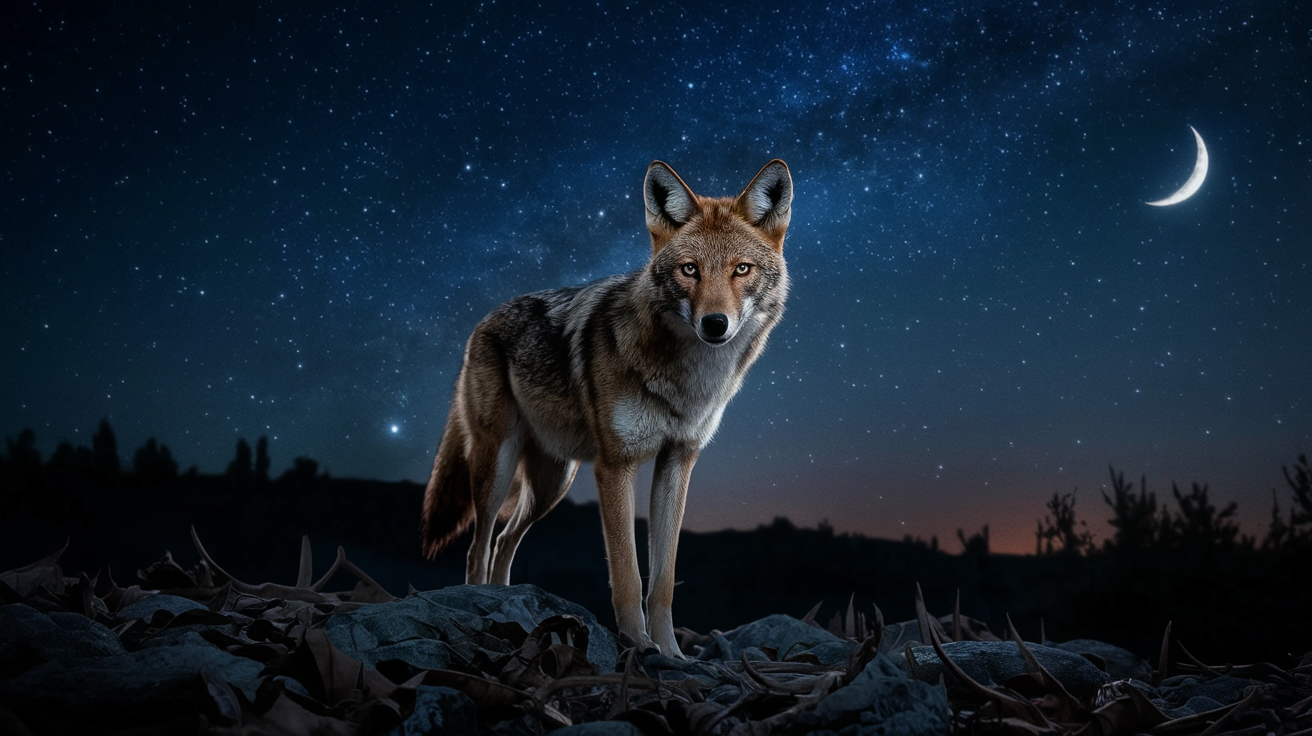
The Spirit Animal
The coyote spirit animal represents the perfect balance of wisdom and folly.
Those who connect with this clever creature often find themselves drawn to life’s mysteries and paradoxes.
The coyote teaches us that sometimes the most deepest lessons come through humor, mistakes, and unexpected experiences.
The Totem Animal
As a totem animal, the coyote blesses people with remarkable adaptability and resourcefulness.
These individuals can steer challenging situations with creativity and intelligence.
They often possess a knack for seeing opportunities where others see only obstacles. Coyote people tend to be natural storytellers and may use humor to diffuse tension or teach important lessons.
The Power Animal
The coyote power animal emerges when someone needs to seize change rather than resist it.
It lends its energy during times of evolution, encouraging flexibility and helping people shed rigid thinking.
This spirit also brings the gift of heightened awareness, teaching its humans to trust their instincts and recognize the hidden messages in everyday encounters.
The medicine of the coyote reminds us that even our mistakes and foolish moments can be powerful teachers on our spiritual quest.
Cultural and Mythological Significance Of The Coyote Spirit

The coyote appears in stories from many parts of the world.
The way different cultures see coyotes differs based on where they live and what they value.
Some cultures view the coyote as a teacher. Others see it as a helper. And in some tales, it plays the part of a joker who stirs up trouble.
The table below shows how different groups tell coyote stories.
| Culture/Region | Main Symbolism | Notable Stories & Beliefs |
|---|---|---|
| Native American | Trickster, wisdom, change |
|
| Celtic | Wisdom, cunning |
|
| African | Wit, survival |
|
| Far Eastern | Dual nature, tricks |
|
| Ancient Civilizations | Stars, fate |
|
| Modern Folklore | Smart thinking |
|
Effect on Human Life and Adaptability
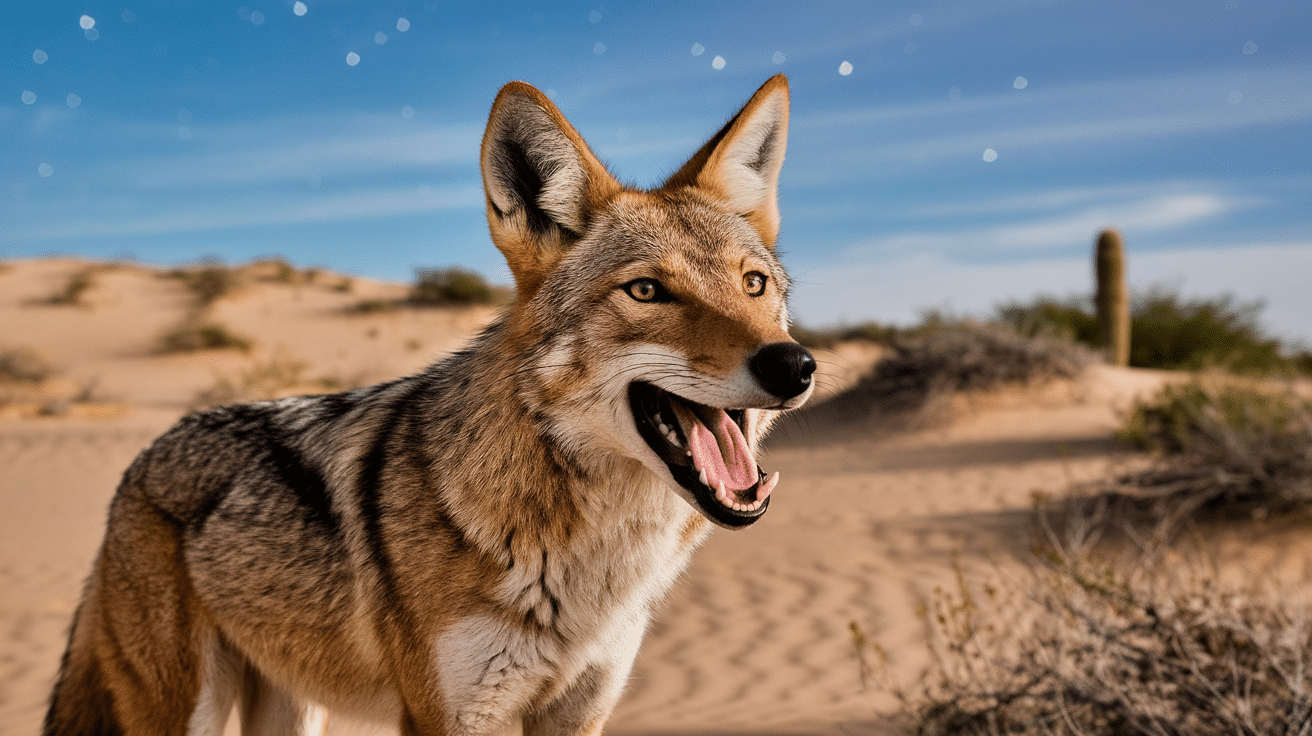
The coyote teaches humans many lessons about life and how to thrive in changing times.
This animal shows people how to bend without breaking.
Coyotes live in many places, from deserts to cities. They eat almost anything and make homes almost anywhere.
These traits make them perfect symbols for humans facing life’s ups and downs.
Flexibility in Hard Times
- Coyotes thrive in harsh spots where other animals cannot live
- They find food when others go hungry
- They teach people to look for fresh ways to solve problems
- When one path closes, the coyote finds another way
- Humans can learn to spot new chances when old plans fail
Smart Use of Resources
- Coyotes waste nothing in their daily lives
- They eat plants, small animals, and even food left by humans
- This skill helps them live through tough times
- People can learn to use what they have and find value in simple things
- Making the most of each day helps during both good and hard times
Balance of Being Alone and With Others
- Coyotes hunt alone at times
- Other times, they work in small groups
- They know when to team up and when to stand alone
- This skill helps humans know when to ask for help
- It also shows when to trust their own skills
Quick Thinking Under Pressure
- When faced with danger, coyotes think fast
- They run, hide, or trick their way out of tight spots
- This shows humans how to stay calm when things get hard
- Quick wits often work better than brute force
- Smart choices can solve problems that strength cannot fix
Finding Joy in Simple Things
- Coyotes play even as adults
- They roll in grass, chase each other, and howl at the moon
- This reminds humans to find joy even during tough times
- A happy heart makes life’s bumps easier to handle
- Small moments of fun can lift the spirit during hard days
What Does Seeing a Coyote in a Dream Signify?
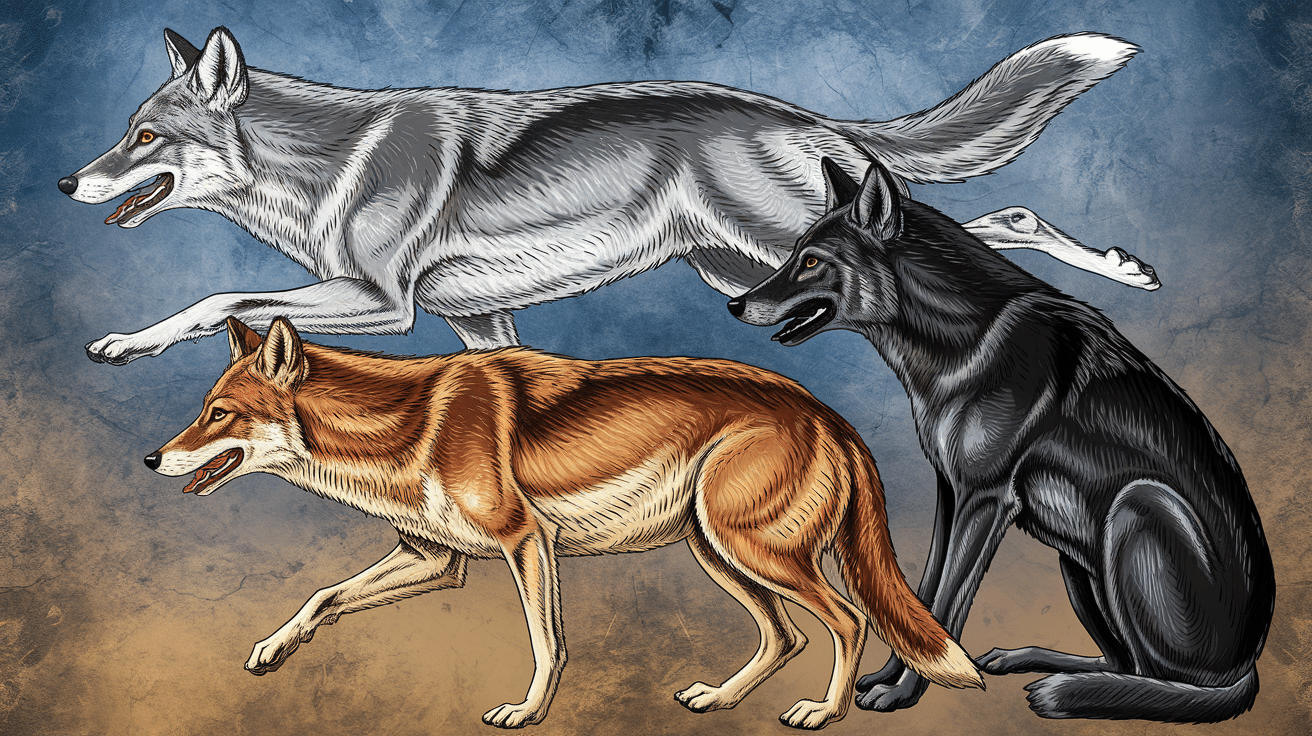
Dreams featuring coyotes offer rich symbolic insights that vary depending on the coyote’s appearance. The color and behavior of these dream coyotes can reveal different aspects of your subconscious mind.
- WhiteCoyotes: These appearing in dreams often symbolize spiritual awakening, purity, and divine guidance. These rare apparitions might suggest you’re entering a period of enlightenment or receiving protection from spiritual forces as you steer life’s challenges.
- BlackCoyotes: Typically represent mystery, the unknown, or shadow aspects of yourself that remain unexplored. Their presence could indicate it’s time to confront fears or address repressed emotions that need processing for personal growth and evolution.
- GrayCoyotes: They embody balance, neutrality, and practical wisdom in the dreamscape. Their appearance might signal the need for compromise or adaptation in your waking life, suggesting that flexibility rather than rigid thinking will serve you best in current circumstances.
- RedCoyotes: Symbolize passion, vitality, and primal energy when they visit your dreams. These fiery manifestations often connect to matters of survival, creative expression, or desire that require acknowledgment and healthy integration into your conscious life.
- BlueCoyotes: These are not found in nature, represent deep instinct and emotional communication in dream symbolism. Their unusual coloration suggests you may be developing psychic abilities or receiving important messages from your greater consciousness that warrant attention.
The context surrounding these colored coyotes, whether they appear friendly, threatening, guiding, or observing, adds important nuance to their meaning in your dreams.
Consider both the coyote’s color and behavior when interpreting these powerful dream symbols.
Myths vs. Facts About Coyotes
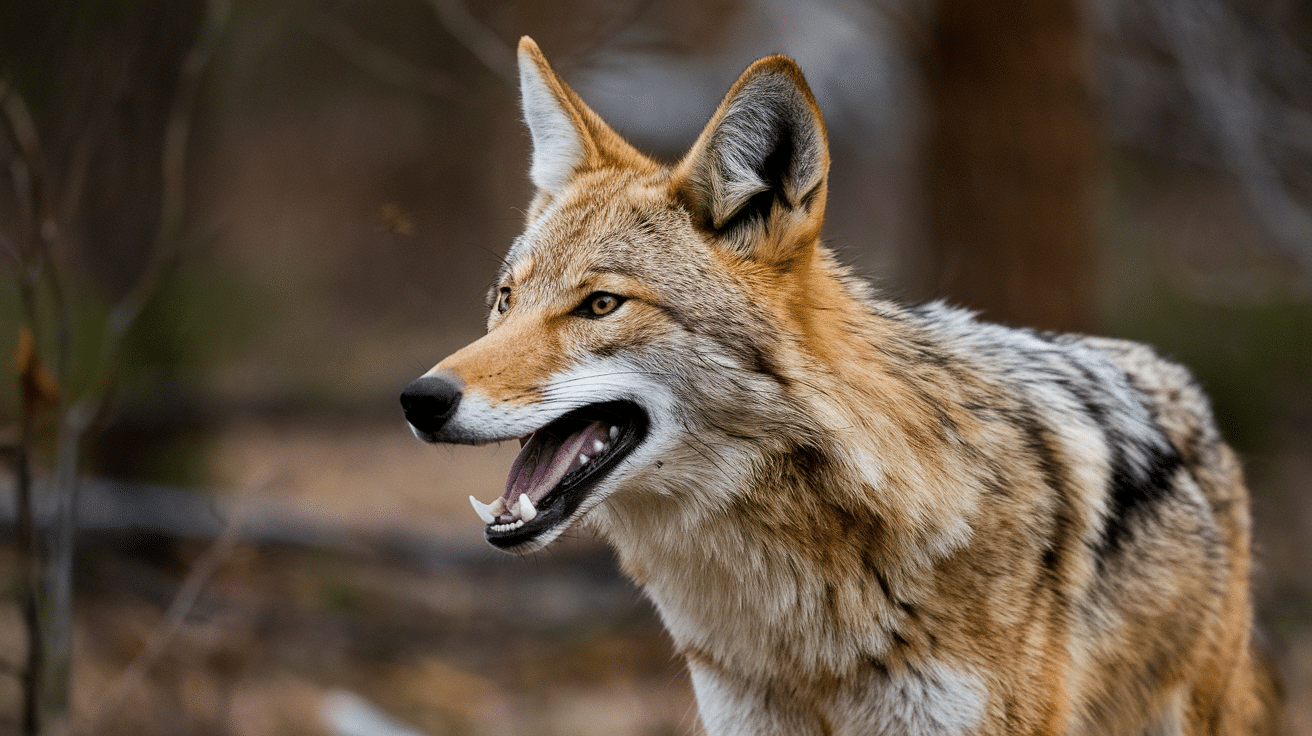
Coyotes, those adaptable canines of North America, often find themselves shrouded in a cloud of myths and misunderstandings.
From tales of vicious predators to misconceptions about their behavior, it is time to separate fact from fiction.
Understanding the true nature of these fascinating animals is crucial for fostering coexistence and dispelling unwarranted fear.
The following table delves into the common myths surrounding coyotes and uncovers the factual realities that paint a more accurate picture of their role in our ecosystems.
| Myth | Fact |
|---|---|
| Coyotes are always a threat to humans. | Coyotes are generally shy and avoid humans. Attacks are rare and usually occur when coyotes are habituated to human food or feel threatened. |
| Coyotes are just large, wild dogs. | Coyotes are a distinct species with unique behaviors and characteristics. They are smaller than wolves and have a narrower snout, bushier tail, and a more pointed face. |
| Coyotes only live in the wilderness. | Coyotes are highly adaptable and thrive in various environments, including urban and suburban areas. They can be found in cities, parks, and even residential neighborhoods. |
| Coyotes hunt in large packs like wolves. | Coyotes primarily hunt alone or in small family groups. While they may form larger groups in areas with abundant prey, they don’t typically form large, structured packs like wolves. |
| Coyotes are nocturnal. | Coyotes are crepuscular, meaning they are most active at dawn and dusk. However, they can be active at any time of day or night, depending on food availability and other factors. |
| Coyotes are solely predators of livestock. | Coyotes are opportunistic feeders and have a varied diet, including small mammals (rodents, rabbits), birds, insects, fruits, and carrion. Livestock predation is often a result of easy access to unprotected animals. |
| Relocating coyotes solves the problem. | Relocating coyotes is often ineffective and can create new problems. Other coyotes quickly fill the vacated territory, and relocated coyotes often struggle to survive in unfamiliar areas. Humane deterrence and habitat modification are more effective long-term solutions. |
| Coyotes are always aggressive toward pets. | While coyotes may view small pets as prey, they don’t automatically attack every pet they encounter. Many encounters are simply coyotes passing through an area. Taking precautions such as keeping pets leashed and supervised can significantly reduce the risk. |
| Coyotes are overpopulated. | Coyote populations fluctuate based on food availability and other environmental factors. While they are adaptable and widespread, they are not necessarily overpopulated in every area. |
| Coyotes are evil and malicious creatures. | Coyotes are a natural and important part of the ecosystem. They play a vital role in controlling rodent populations and maintaining ecological balance. Viewing them as inherently “evil” is a harmful misconception. |
Summing Up
Studying coyote meaning spiritual reveals how this clever animal teaches wisdom across cultures.
From Native American tales to modern life lessons, the coyote spirit guides people to adapt, think quickly, and find joy in simple things.
This wisdom matters now more than ever as humans face changing times that call for flexible thinking and smart use of resources.
What comes next? Coyote signs appear in daily life moments that ask individuals to be clever instead of forceful, flexible instead of rigid.
By bringing coyote wisdom into daily choices, people connect with ancient knowledge that still works today.
The coyote’s path reminds observers that the smartest way forward often involves wit, play, and seeing opportunity where others see only problems.

